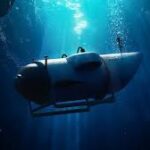In its mission to picture the earliest stars to twinkle in the galaxy, the new James Webb telescope has reached a crucial milestone. The gigantic kite-shaped sun cover for the space observatory was deployed on Tuesday by controllers. Webb will only be able to detect signals from the farthest objects in the universe if he uses this tennis court-sized barrier. The telescope’s mirrors, the largest of which is 6.5 m wide, will now be unpacked as part of the commissioning process.
The deployment of the five-membrane solar shield is a win for the engineering teams at NASA and Northrop Grumman, both of which are based in the United States.
Controllers separated and then tensioned the shield’s multiple layers after years of testing on full-scale and sub-scale models.
James Webb was launched from French Guiana aboard an Ariane rocket on December 25. The telescope is intended to replace the Hubble space telescope, which is 31 years old and nearing the end of its useful life.
Webb will carry out comparable research to Hubble, but with next-generation technology that will allow it to view deeper into the cosmos and, as a result, further back in time. Its golden mirrors are presently in the sights of the controllers at the Space Telescope Science Institute in Baltimore, Maryland.
The telescope’s two primary reflectors, like the sunscreen, had to be folded to fit inside Ariane’s nosecone.
The 74cm-wide secondary mirror should be extended on 8m-long booms in front of the primary mirror on Wednesday.
The primary mirror features wings that were tucked away during launch, but must now be rotated 90 degrees to create a full, 6.5m-wide surface. If everything goes according to plan, this should happen by the end of the week.
Webb is currently travelling 1.5 million kilometres away from Earth on the planet’s “midnight” side. It will conduct research on the Universe from this position.
James Webb is a cooperative initiative between NASA, the European Space Agency, and the Canadian Space Agency.











More Stories
SpaceX Achieves Successful Starship Launch in Dramatic Comeback
Scientists ‘Resurrect’ Extinct Dire Wolves Using Gene Editing
‘China’s Hawaii’ Hit by the Strongest Typhoon in a Decade